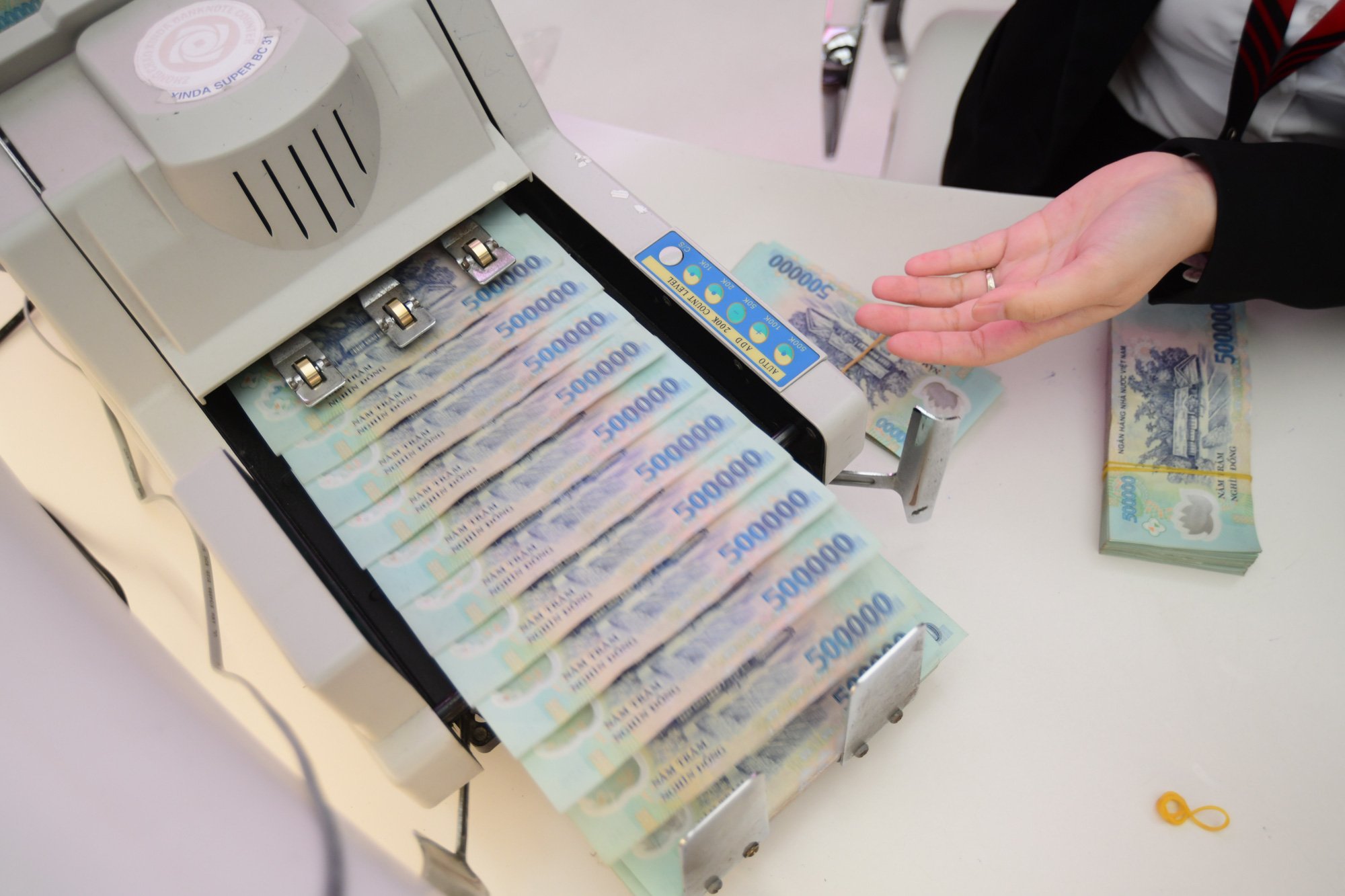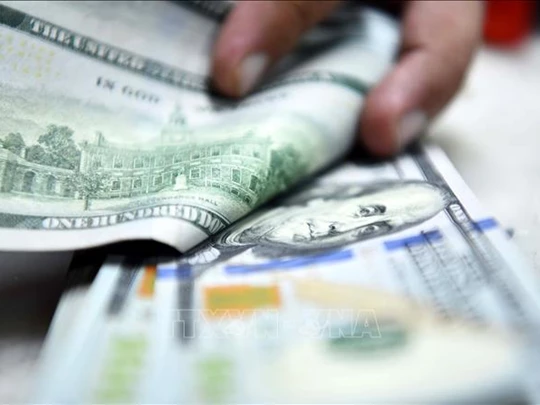
Vietnam's public debt is safe within limits with a debt structure that increasingly reduces the risk of foreign debt - Photo: QUANG DINH
The Government has just reported to the National Assembly on the public debt situation in 2024 and the forecast for 2025.
Accordingly, based on the estimated implementation of borrowing and repayment of public debt and foreign debt of the country in 2024, it is expected that debt indicators by the end of 2024 will be within the ceiling limit and safety warning threshold decided by the National Assembly.
Debt ratios are within safe limits and thresholds.
Specifically, the estimated public debt/GDP ratio is 36-37%, government debt/GDP is 33-34%. The country's foreign debt to GDP by the end of 2024 is expected to be around 32-33% of GDP (the ceiling prescribed by the National Assembly is 50% of GDP).
The ratio of the country's foreign debt repayment obligations to the export turnover of goods and services in 2024 (excluding short-term principal repayment obligations under 12 months) is expected to be around 8-9%, within the limit allowed by the National Assembly of 25%.
According to the report, these debts are borrowed mainly from domestic sources. The government bond holding ratio of insurance companies, Vietnam Social Security, investment funds and financial companies is about 62.5% of the total outstanding debt. The rest is held by commercial banks, securities companies, investment funds and other investors.
Foreign creditors are mainly bilateral and multilateral development partners such as Japan, South Korea, the World Bank, and the Asian Development Bank.
The proportion of local currency debt accounts for the majority of the Government debt portfolio, estimated at 71.3% by the end of 2023.
Foreign currency debt is still mainly in USD (about 12.5%), JPY (about 8.2%) and EUR (about 4.4%), other currencies account for about 3.7%.
This year, based on the total central budget loan amount decided by the National Assembly, the Prime Minister has committed to mobilizing loans for the whole year of 2024 to reach VND 670,679 billion.
Of which, borrowing for balancing the central budget is 659,934 billion VND, borrowing for re-lending is 10,745 billion VND.
These amounts will include domestic loans estimated at VND639,399 billion (equal to about 95% of the plan). This will mainly be through the issuance of government bonds with a term of 11 years, an average interest rate of 3%/year, down 0.21 percentage points compared to 2023.
ODA loans and preferential loans from foreign donors are estimated at VND31,280 billion. Of which, loans for re-lending are estimated at VND10,745 billion. Foreign loans are mainly ODA loans and preferential loans from the Government.
These are long-term, low-interest loans (average 1.9%/year) from multilateral and bilateral donors, including the World Bank, Asian Development Bank, Government of Japan, Government of Korea, and AFD (France).
More active public debt structure, reducing foreign loan risks
The Government's debt repayment in 2024 will be fully implemented as committed, within the budget approved by competent authorities. The direct debt obligation of the Government on budget revenue is 21-22%.
The Government assessed that public debt management has been implemented closely following the National Assembly's resolution.
This ensures the goals and targets on public debt safety, total borrowing, debt repayment of the budget, government guarantee limit and borrowing for re-lending ODA loans and foreign incentives within the permitted limits.
Basically, public debt management meets the need to mobilize capital for development investment, while ensuring debt indicators by the end of 2024 are within the ceiling and safety warning threshold approved by the National Assembly, ensuring national financial security.
The government debt structure will continue to improve in a positive direction by the end of 2024. Government-guaranteed debt will continue to be tightly managed, with its proportion decreasing from 3.8% of GDP in 2021 to around 2-3% of GDP in 2024.
Regarding national credit rating, until August 2024, S&P, Fitch and Moody's will continue to maintain Vietnam's national credit rating.
Accordingly, the ratings by S&P and Fitch are both at BB+, while Moody's rates it at Ba2 with a stable outlook.
In particular, government debt is stable and much lower than that of similarly rated countries (34% compared to the BB average of 53%).
Proactive debt management strategy helps to minimize the Government's liquidity risk. Improved debt position, reduced dependence on external sources of funding, and a gradual reduction in the proportion of foreign currency debt help to reduce exchange rate risk.
However, the Government recognizes that the progress of negotiating and signing foreign loan agreements is slower. Foreign borrowing costs are currently higher than the average domestic borrowing costs and pose risks of exchange rate fluctuations. Disbursement of foreign-sourced public investment capital is low...
The reasons are explained as the problems related to public investment and bidding have not been thoroughly resolved; legal problems have caused the implementation of loan agreements to be behind schedule...
Source: https://tuoitre.vn/no-cong-an-toan-viet-nam-dang-vay-no-o-dau-20241013091508047.htm



![[Photo] Looking back at the impressive moments of the Vietnamese rescue team in Myanmar](https://vstatic.vietnam.vn/vietnam/resource/IMAGE/2025/4/11/5623ca902a934e19b604c718265249d0)

![[Photo] "Beauties" participate in the parade rehearsal at Bien Hoa airport](https://vstatic.vietnam.vn/vietnam/resource/IMAGE/2025/4/11/155502af3384431e918de0e2e585d13a)



























![[Photo] Summary of parade practice in preparation for the April 30th celebration](https://vstatic.vietnam.vn/vietnam/resource/IMAGE/2025/4/11/78cfee0f2cc045b387ff1a4362b5950f)






























































Comment (0)